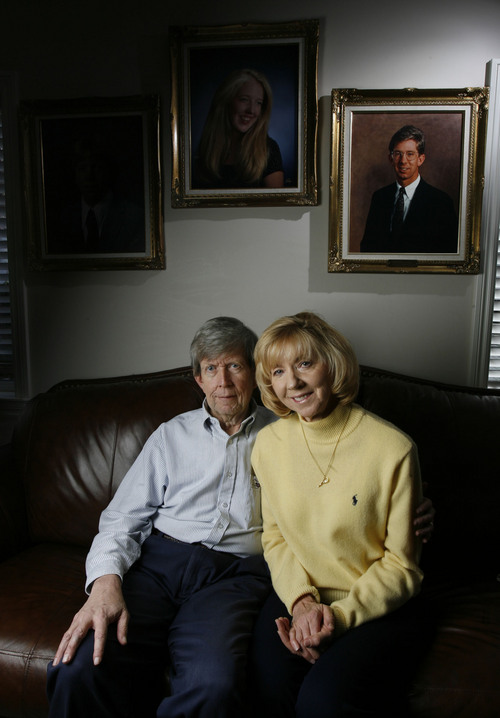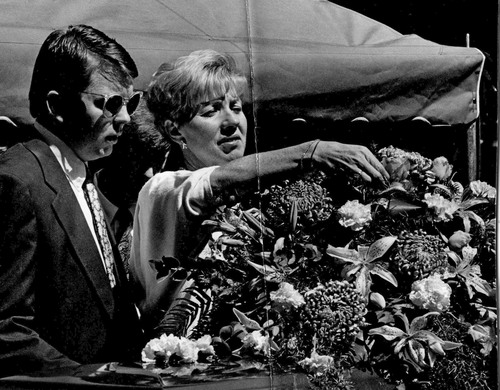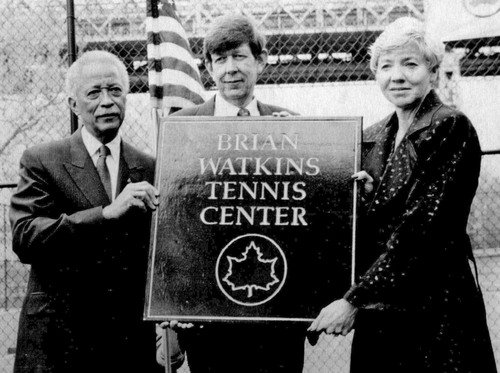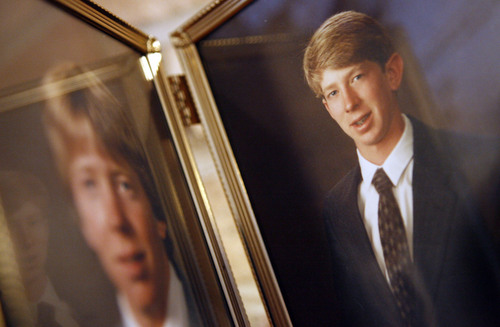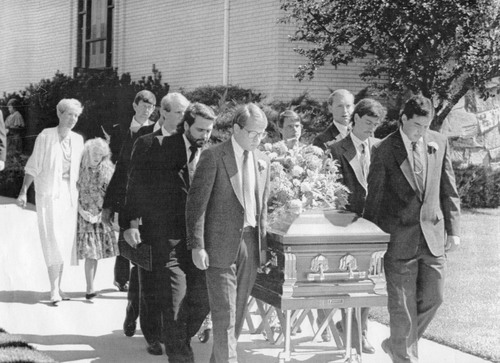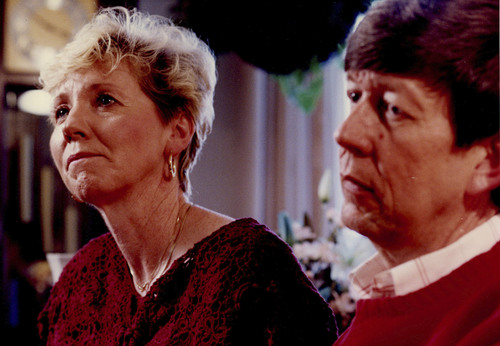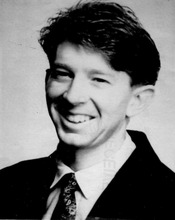This is an archived article that was published on sltrib.com in 2013, and information in the article may be outdated. It is provided only for personal research purposes and may not be reprinted.
The attorneys for a Queens man are renewing the fight that he was wrongfully convicted for being involved in the stabbing of a Utah tourist.
On Sept. 2, 1990, a group of teens attacked a family of tourists in a New York City subway station, leaving Brian Scott Watkins, 22, dead. Watkins and his family had come from Provo to see the U.S. Open tennis tournament.
For his alleged involvement, Johnny Hincapie was convicted along with six other people. The 18-year-old with no prior arrest record entered prison on a 25 years to life sentence for second-degree murder and robbery. He is still there, and turned 41 last June.
Armed with two new affidavits — from one of Hincapie's codefendants, and another from a suspect whose case was dismissed — that Hincapie had nothing to do with the mugging, the man's attorneys filed a motion Monday in Manhattan Supreme Court calling for a judge to overturn his guilty verdict. The attorneys say that justice has been done for the Watkins family; now, it is time to do the same for Hincapie.
The New York trip was an annual tradition for the Provo family. They were waiting on a subway platform, on their way to a Greenwich Village restaurant, when the muggers attacked them. Watkins had been trying to defend his mother, who had been punched, when he was stabbed in the chest.
The man suspected of wielding the murder weapon claimed that Watkins had turned and accidentally run into it.
Watkins ran after the muggers, unaware that his pulmonary artery was severed, and collapsed on the first landing near the token booth. He later died at the hospital. Police would later learn that the muggers wanted money to go dancing at a club, which had a cover charge that night of $15.
"The city was enraged," according to the motion filed Monday. "The murder garnered tremendous publicity, with the public demanding swift police work."
Officers arrested eight people within hours. But the motion argues that in its haste, the New York County District Attorney's Office wrongfully charged two of them, including Hincapie. The other, Luis Montero, had his case dismissed before trial.
Hincapie played no part in the attack on the Watkins family, according to the motion.
"No physical evidence linked Johnny to the crime — no blood, no weapon, no fingerprints. He was not positively identified by anyone as a participant in the robbery," the motion reads. "The only evidence supporting Johnny's conviction was a 'confession,' obtained through coercion, and a line-up identification in which an eyewitness stated Johnny looked 'vaguely familiar.'"
While Hincapie was not involved in the mugging, he was with the larger group of teenagers, according to the motion. He had been going down an escalator to look for a friend when he saw a large crowd rushing toward him, the motion adds. He turned and left, seeing people fleeing from something, though he was unaware what it was.
Hincapie's attorneys argue that he only found out about the mugging through the news the next morning. Police arrested him at his home about 23 hours after the attack, based on someone naming him.
When Hincapie told a detective that he did not know about the attack, the detective told him he was lying and that he would admit his involvement if he wanted to go home, according to an affidavit from Hincapie included in the motion. Hincapie added in the affidavit that he asked what a lawyer would say about memorizing a story he knew was untrue. The detective said that the lawyer would advise him to memorize the story, the affidavit reads.
Other evidence presented during Hincapie's trial to corroborate the confession was a line-up viewed by Karen Watkins, the victim's mother, who said Hincapie looked "vaguely familiar," according to the motion. But at trial, she could not identify him, the motion adds.
"Unfortunately for Johnny, the significant evidence that his confession was coerced and that the line-up was unreliable was insufficient to give Johnny's jurors a reasonable doubt as to his guilt."
Two people have come forward to help clear Hincapie's name.
Montero, the suspect who had his case dismissed, recently signed an affidavit stating that Hincapie was not involved in the mugging. Montero swears in his affidavit to seeing Hincapie on the subway station escalator at the time of the attack, so he could not have been involved.
Montero never came forward until now because he was "afraid of dealing with law enforcement again," according to the motion. During his temporary jail stay, Montero had reportedly received threatening letters from the Ku Klax Klan, and his mother was attacked because of his perceived involvement in the mugging, so he moved to Colombia shortly after his release. He was also afraid to endanger his goal of obtaining American citizenship, since he has faced issues with immigration authorities before due to clerical errors related to the wrongful arrest, according to the motion.
However, Montero recently passed the citizenship test and "has come forward now because he is less concerned with immigration issues and understands that sharing his knowledge could help set free a wrongfully imprisoned man," the motion reads.
The motion includes Montero's affidavit, along with a corroborating affidavit from one of the convicted suspects.
That suspect, Anthony Anderson, explained that he had not come forward until now because his attorney advised him to "keep [his] mouth shut about any information in the case," according to his motion. The attorney told Anderson that anything he said "would hurt him because he had already made an incriminating statement against himself," the motion adds.
"I always knew that Johnny had nothing at all to do with this crime. Therefore, I am coming forward now and speaking the truth," Anderson is quoted as saying in the motion. "I cannot allow an innocent man to continue to be in prison for a crime which he was not involved."
The motion also cites the confession of another convicted participant, Ricardo Lopez, who said that six people, not eight, committed the crime. Lopez's confession was excluded from Hincapie's trial since the court deemed it hearsay.
Hincapie has fought his conviction before, but each of his appeals have failed. In response to his attorney's request, the District Attorney's Office re-opened the case in 2007, but was not satisfied that the conviction was wrongful and closed it again. But the motion points out that "in violation of all principles of best practices for conviction integrity review, former Assistant District Attorney Thomas Schiels, the same prosecutor who tried Johnny's case, was responsible for reviewing his conviction."
The New York County District Attorney's Office was reviewing the motion Monday afternoon and did not have any immediate comment.
While in prison, Hincapie earned a master's degree in professional studies and urban ministry and has been involved in the prison's theater program. If released from prison, Hincapie plans to start a non-profit to give low-income children access to theater education.
"Johnny, a man with a demonstrated interest and capacity to better New York City and society in general, has spent his adult life confined in a state penitentiary," according to his attorney's motion. "It is time to do justice for Johnny."
A tennis center in Manhattan's Lower East Side bears Watkin's name in dedication. His family could not immediately be reached for comment.
Twitter: @mikeypanda


